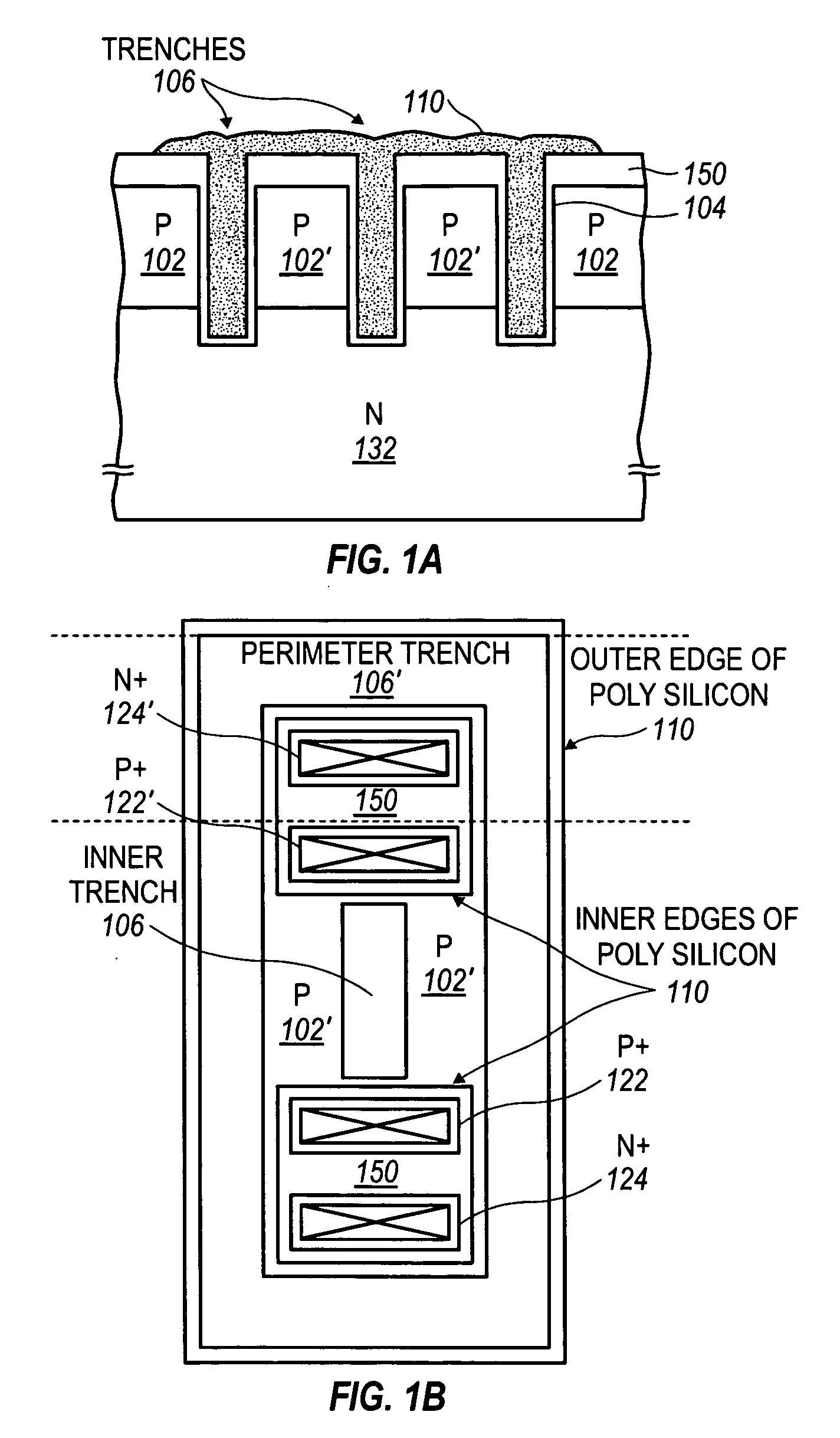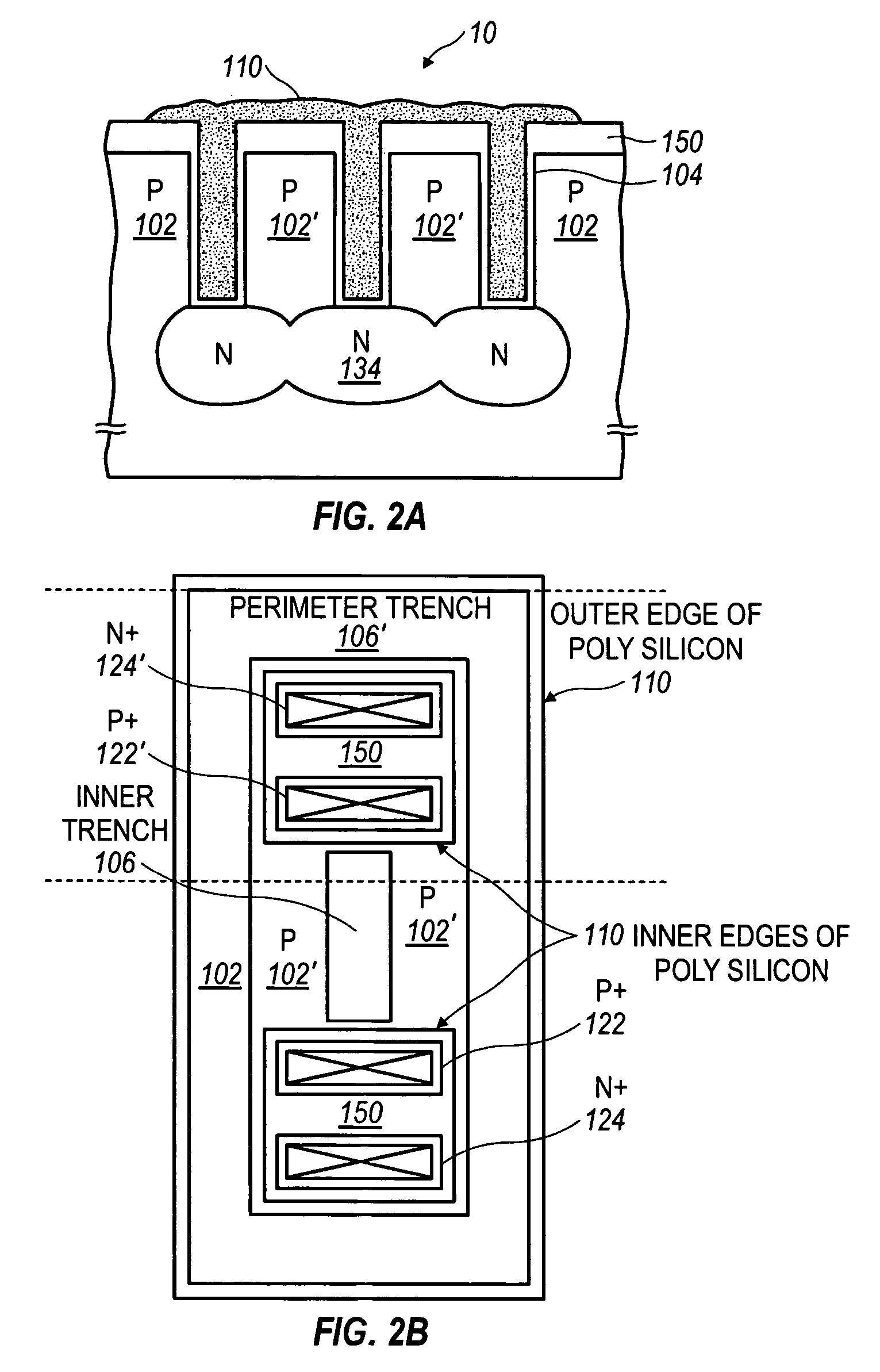High-voltage transistor fabrication with trench etching technique
a technology of trench etching and high-voltage transistors, which is applied in the direction of transistors, semiconductor devices, semiconductor/solid-state device details, etc., can solve the problems of limiting the current-carrying capability available for a given footprint or cost, and the amount of active channels is limited by the surface area of the die, so as to achieve the effect of particularly easy depletion-mode device fabrication
- Summary
- Abstract
- Description
- Claims
- Application Information
AI Technical Summary
Benefits of technology
Problems solved by technology
Method used
Image
Examples
Embodiment Construction
[0021] The numerous innovative teachings of the present application will be described with particular reference to the presently preferred embodiment (by way of example, and not of limitation).
[0022] The present application describes techniques for significantly increasing the amount of active channel that can be obtained on a die through the use of trench technology for JFETs and depletion mode MOSFETs. An earlier U.S. Pat. No. 4,393,391, describes the manufacture of enhancement mode power MOS transistors, including DMOS transistors that have the amount of active channel area increased through the use of grooves having various geometries. The present invention disclosure differs considerably from the devices described in this earlier patent, as will be described below.
[0023] Depletion mode MOSFETs have a channel region present when no gate-to-source voltage is applied. Applying a voltage of the appropriate polarity to the gate decreases the conductivity of the channel. The amount...
PUM
 Login to View More
Login to View More Abstract
Description
Claims
Application Information
 Login to View More
Login to View More - R&D
- Intellectual Property
- Life Sciences
- Materials
- Tech Scout
- Unparalleled Data Quality
- Higher Quality Content
- 60% Fewer Hallucinations
Browse by: Latest US Patents, China's latest patents, Technical Efficacy Thesaurus, Application Domain, Technology Topic, Popular Technical Reports.
© 2025 PatSnap. All rights reserved.Legal|Privacy policy|Modern Slavery Act Transparency Statement|Sitemap|About US| Contact US: help@patsnap.com



